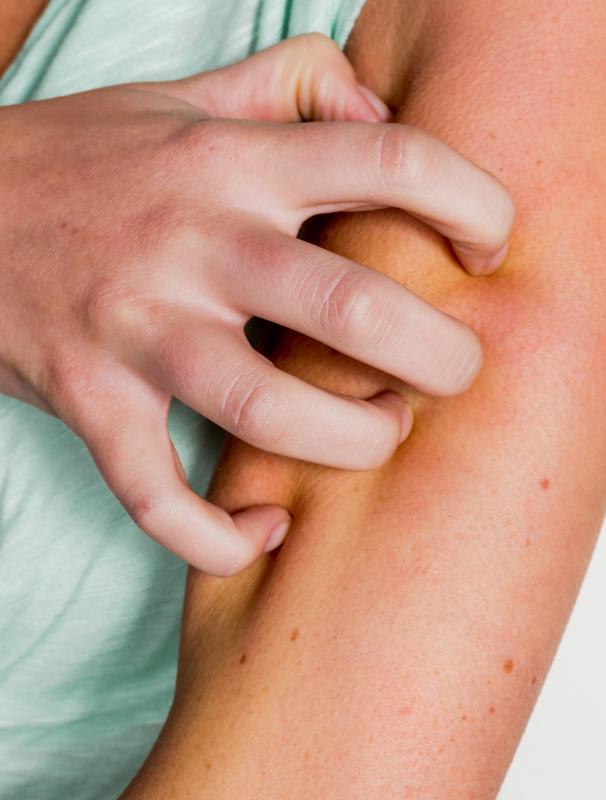At TheHealthBoard, we're committed to delivering accurate, trustworthy information. Our expert-authored content is rigorously fact-checked and sourced from credible authorities. Discover how we uphold the highest standards in providing you with reliable knowledge.
What are the Most Common Uses for Topical Clindamycin?
Topical clindamycin is an antibiotic that is used primarily to manage severe cases of acne. It is also used to kill several forms of potentially harmful bacteria, such as Streptococcus and Staphylococcus. It is also used to fight often deadly bacteria, Methicillin-resistant Staphylococcus aureus (MRSA). Oftentimes, it is prescribed to treat vaginal infections, particularly if the infection is not responding to other treatments. Occasionally, it may be used in veterinary medicine to treat skin infections as well.
There are various forms of topical clindamycin available. Many times the form that is used is dependent on what condition it is being used to treat. For example, it is available as a cream, which is commonly used to treat vaginal infections. It is also available as a liquid solution, foam, lotion, or gel. These forms are typically used to manage acne or treat skin infections that are caused by bacteria.

Although the most common use for topical clindamycin is the management of acne, it is not designed to fully treat or cure acne. It will lower the number of acne pimples, but it will not clear up acne in its entirety. It works by killing the acne-causing bacteria, thereby limiting the severity of the outbreaks.
Topical clindamycin is a popular choice to kill certain bacterial infections. For example, a skin infection caused by Streptococcus or Staphylococcus will often be treated through the use of topical clindamycin. It will also kill bacteria called Capnocytophaga canimorsus. These bacteria cause zoonotic disease and are the result of an infection from an animal bite. Applying this topical antibiotic to the wound is believed to kill the bacteria and treat or prevent the disease.

Among the most publicized and dangerous bacteria are the MRSA. These bacteria are typically found in hospitals and thrive on open sores and areas where medical equipment was inserted into the human body. It may prove to be deadly if it is not controlled. It is resistant to many forms of antibiotics, but some strains of MRSA respond to clindamycin, particularly near open sores.

In addition, topical clindamycin is used to treat vaginal infections, such as bacterial vaginitis. The cream is applied within the vagina to treat the infection. Although other drugs are available, it is believed to work well to treat the infection.
People are not the only ones to benefit from the use of topical clindamycin. It is often prescribed by veterinarians to treat skin infections on animals as well. It is typically applied to the infected skin area as a gel or a lotion.

Although there are many uses for topical clindamycin, there are even more uses for oral clindamycin. As one of the most powerful antibiotics, both forms are used to treat a wide range of bacterial infections. As with any drug, side effects are possible. Any questions regarding the use of topical clindamycin should be addressed with a medical practitioner.
AS FEATURED ON:
AS FEATURED ON:



















Discuss this Article
Post your comments